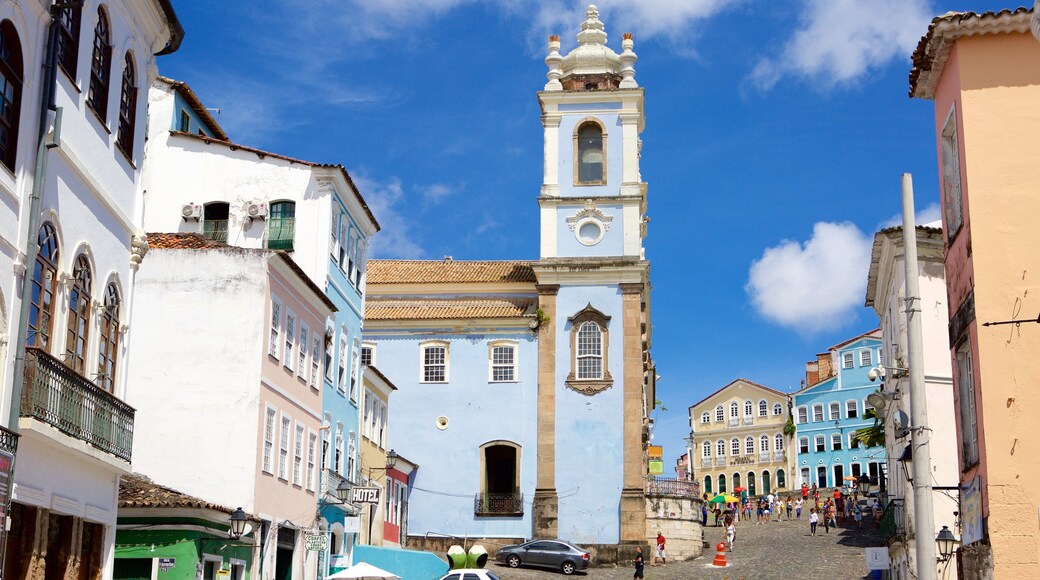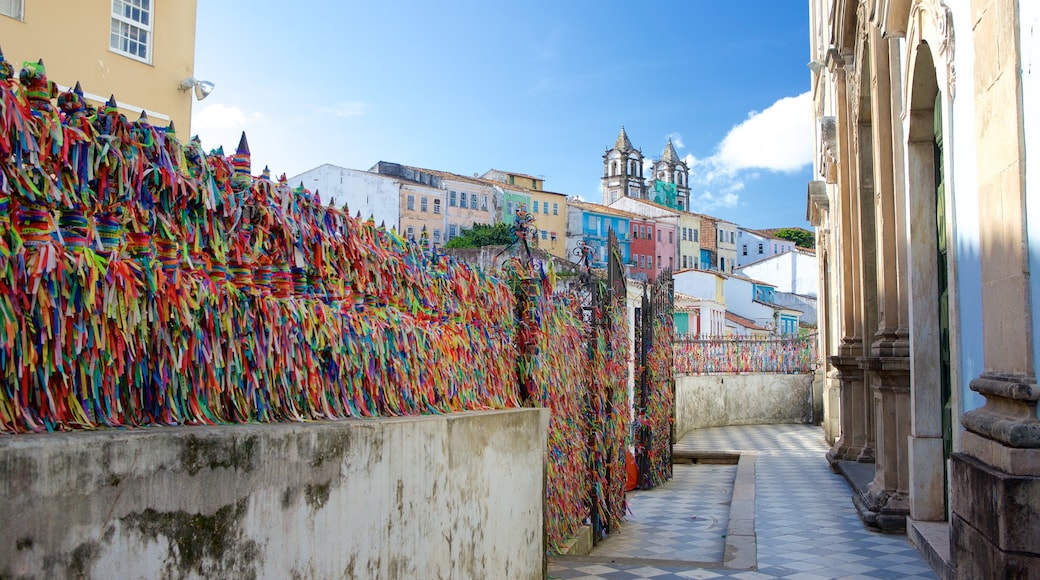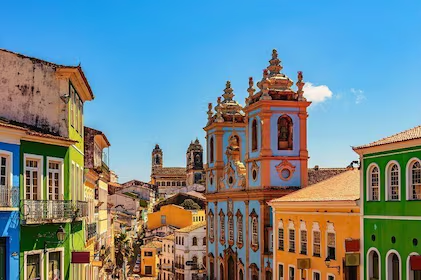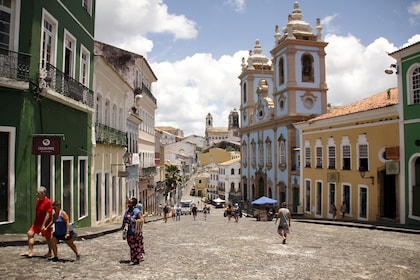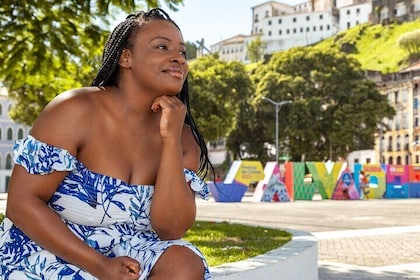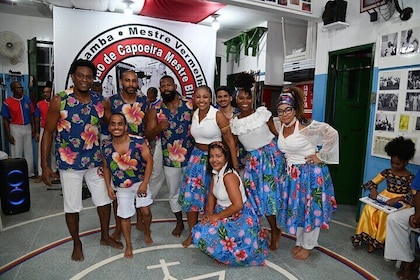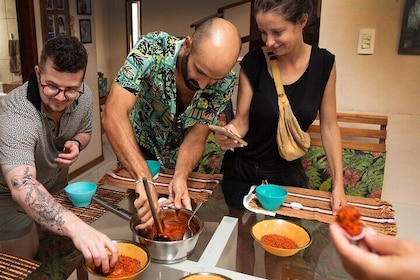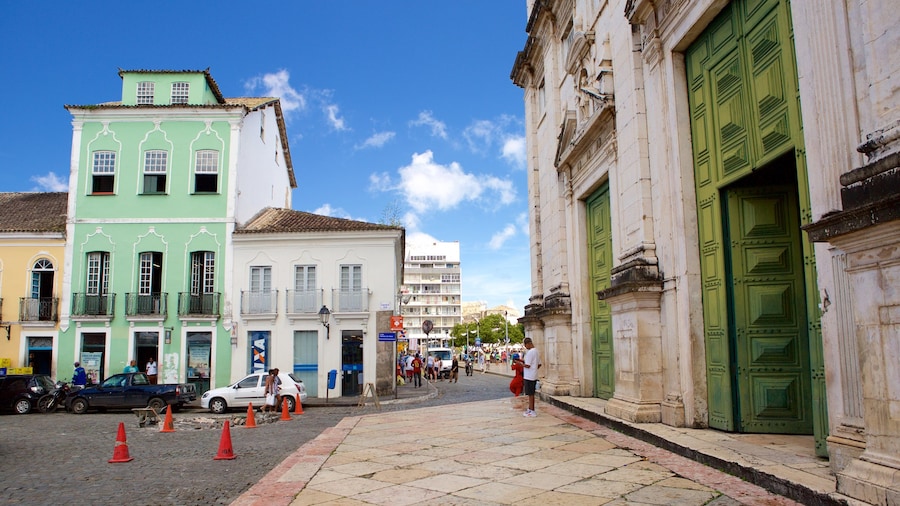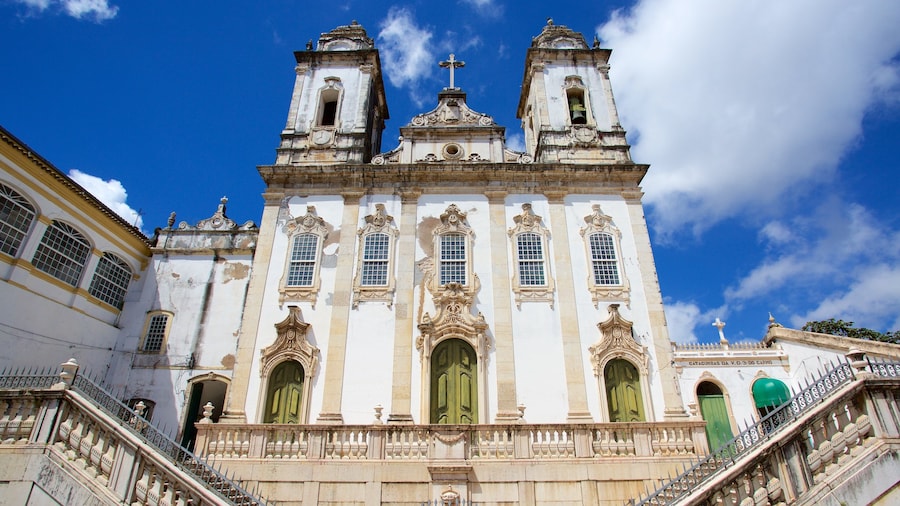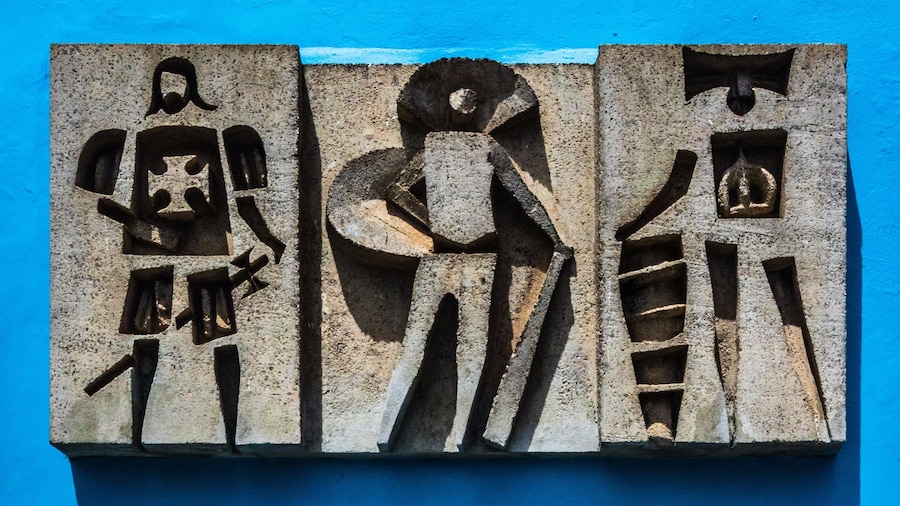In a city blessed with stunning churches this pretty slave-built church, in the heart of Salvador’s UNESCO-protected Historic Centre, is one its most interesting.
Established in 1704, Our Lady of the Rosary of Black People (Igreja de Nossa Senhora do Rosário dos Pretor) took almost a century to complete. Enslaved members of the Brotherhood of Our Lady of the Rosary built the church and worked overnight so as to not impede their daytime chores. Spend some time admiring the artwork and architectural designs, which bear testament to the tenacity of the city’s slaves.
The church’s blue-colored façade displays a blend of the colonial and rococo architectural styles. It features pilasters crowned by capitals in addition to rows of artistic doors and windows. Look up to see two bell towers, which frame a creative gable. Note the swathes of multicolored fitas (ribbons or wristbands) that hang from the church’s fence. Devotees tie them to the fence for good luck. You can purchase them from vendors that circulate the area.
Inside, the church has a series of chapels and altars festooned with decorative tiles and figurines. See portrayals of scenes from the lives of Our Lady of the Rosary of Lisbon and St. Dominic. Spot images of revered saints such as St. Anthony of Catigerona and St. Benedict. Go to the small cemetery to see the tombstones of slaves, including some of those that helped construct the church.
Time your visit to coincide with the Sunday Mass service, when hundreds of devotees fill up the church and the street outside. Listen to the mesmerizing sounds of the drumming and singing, which is a fusion of Catholic liturgy music and the music of Bahía’s Candomblé religion.
Find the church in the PelourinhoOpens in a new window neighborhood, the focal point of Salvador’s Historic Center. It’s a short walk from lively squares, museums and other important churches. Walk along cobblestone streets lined with pastel-hued colonial mansions to Terreiro de JesusOpens in a new window square, home to the 17th-century Cathedral of SalvadorOpens in a new window.
Our Lady of the Rosary of Black People is open daily. This is an active church so remain quiet when visiting and be respectful of worshippers.

